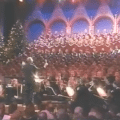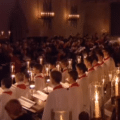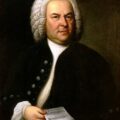Dec 11, 2012
Bah! Humbug!

Feeling like Ebenezer Scrooge? I certainly hope not! But if you are – I have an antidote. And, as you might guess, knowing me as you do. . .it’s listening to Christmas carols. Yes, having sung them for most of my life I know how much fun it is to sing them! But to listen to carols – really well sung – can touch us, move us, in a way that singing them ourselves simply cannot.
One of the most fascinating things about these musical expressions is their origin. Many of them began as folk songs with completely different lyrics – totally unrelated to Christmas. Take What Child Is This? As many of you know, this carol began its life as the ballad Greensleeves…decidedly of a different subject matter – take a look at the original text. Another aspect of Christmas carols that I’ve always found interesting is that some of the most beautiful of them are in minor modes – like What Child Is This? or the Coventry Carol with its final resolution in each verse to a major chord.
Then there is the sheer quantity of it. This holiday has for so many centuries inspired composers to create some of their most memorable works. And, in part due to the immense amount of this music, there is always room for a ‘discovery’ – as you would expect from The Discovery Orchestra! In my very first blog post, Opening Chord, I wrote of my experience as a young boy chorister at St. Peter’s Choir School in Philadelphia. The choir of St. Peter’s Church sang two services in at Christmas – one on Christmas Eve and one the next morning.
It was a lot of singing, but one short Christmas anthem very dear to my heart was written by the English-born Canadian organist and composer Healey Willan (1880-1968). He musically set the Latin text Hodie, Christus Natus Est (Today, Christ is Born). Here’s a link to a YouTube clip. Listening to it of course sends me straight back into 4th grade when I sang this music for the first time. It overwhelmed me then to sing it. It appeared to overwhelm the members of the congregation at St. Peter’s as we sang. It overwhelms me now to listen to it. Why not listen and see where it sends you. The ancient Latin text and translation are below.
Hodie Christus natus est Today is Christ born:
hodie Salvator apparuit: today the Savior has appeared;
hodie in terra canunt Angeli, today the Angels sing,
laetantur Archangeli: the Archangels rejoice;
hodie exsultant justi, dicentes: today the righteous rejoice, saying:
Gloria in excelsis Deo, alleluia! Glory to God in the highest. Alleluia!








